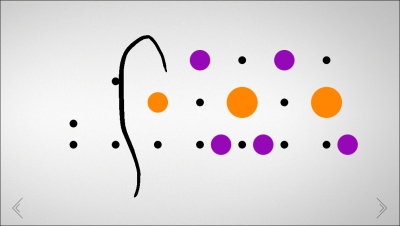Because we're coding for iOS, it's important to note the uniqueness of the device we're creating games for, that is, the touchscreen itself versus a plastic controller with joysticks and triggers that the user has in their hands. When creating games for iOS (or any smartphone device with a touchscreen), you must create the controls such that they feel natural and fluid on the device, as if the game never existed on another console.
Granted, it's understandable that some games are better suited for D-pad-style movement. However, there's always the accelerometer, swipe controls, or the way that Infinity Blade does it (using small buttons on the screen to block or dodge, and also using swipes across the center of the screen to attack with your sword).
Unfortunately, there's no "how to program" section for the best controls, as it's all based on your individual game. For example, in this book's game, we don't tap a unit and then use a D-pad to tell the game which direction to send the unit in. Instead, we make use of the touch-and-drag feature of iOS and integrate that as part of our controls.
There are more good examples of touch-integrated controls later in this chapter, but first, let's go over what not to do.
The following are some examples of some games that just basically took the controls they had on their console or PC version of the game and dumped them into the touchscreen, hoping it would work out for them.
Game Dev Story: Although this is not a bad game on its own, the controls are completely menu driven and don't feel as if they were created with a mobile in mind.
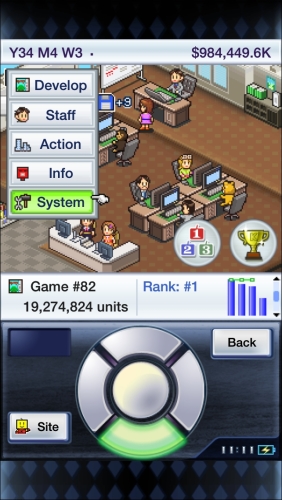
Tomb Raider I: Just based on the screenshots, it's easy to see how complex the controls are and how little time the developers put into innovating their control scheme for the mobile platform.
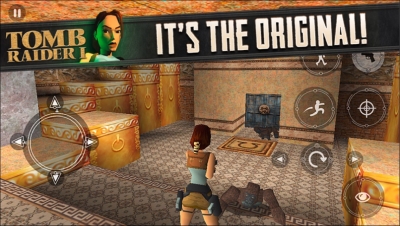
Duke Nukem 3D: Again, just based on the following screenshot, you can understand what bad controls are being pointed out here:

Midway Arcade: They could've done so much better when it comes to cycling through the mini-games and even the mini-games themselves. Some of the games feel mobile friendly, but the rest are just not pulling their weight.
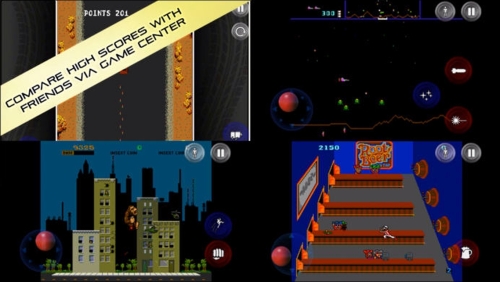
In this section, you'll find some games that, whether they started on console before or not, have some great controls on mobile. They exhibit everything beautiful about being able to code games for a handheld device with a touchscreen and an accelerometer.
First up is Shadowmatic; you drag the screen to rotate the objects, and tilting the device moves the camera so slightly that you really get a three-dimension-like feeling in this game.

Next is Smash Hit; not only does it spawn the metal balls where your finger touches but also the easy-to-press buttons cause no disruptions to the gameplay either.
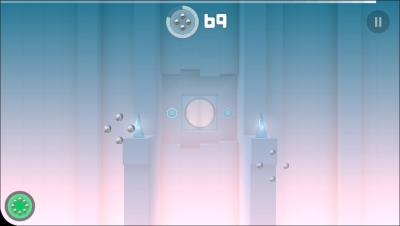
I can't forget Angry Birds, with its pinch-zoom, pullback mechanics, and easy-to-understand gameplay, all of which stem from great touchscreen controls.
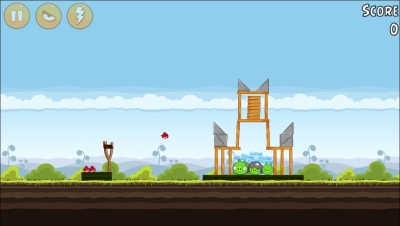
There's also Temple Run, integrating the swiping mechanics in every direction, making the user feel as if they're actually pushing their character in the particular direction.
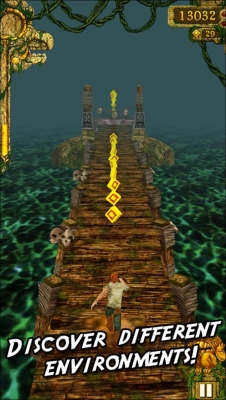
Last but not least (as there are surely a lot more that also have great touchscreen controls) is Blek. I'm not even sure whether this game could exist outside a touchscreen environment because it's just so fluid!
